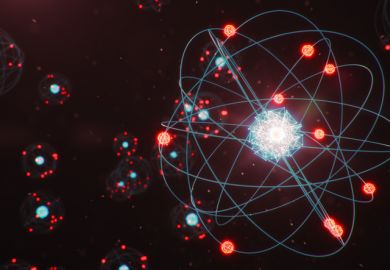After two sniffle-free years, I’m suffering my second cold of the autumn. I have, therefore, tried to maintain a proper sense of detachment while reading Karin Moelling’s potpourri of a book. Moelling wants us to see the upside of viruses rather than concentrating on their negatives: HIV/Aids, poliomyelitis, hepatitis, Sars…and the common cold. Hers is one of a slew of recent books that open our eyes to the multitude and wonder of microbial life, surrounding us, living on and in us. And in the case of viruses, becoming part of us, inveigling their genes into our DNA. Can there be a more intimate association?
It is a question that Moelling has pondered throughout her career as a molecular biologist, while determining how viruses work and using them as laboratory tools. She sees herself as a cancer researcher as much as a virologist. Her field is retroviruses, and she is renowned for elucidating the role of an enzyme essential for viral replication. Equally important is the use of retroviruses, by Moelling and many of her peers around the world, to look for the molecular causes of cancer. The discovery of proteins involved in cancer pathways has led to important therapeutic advances. One of these – the Raf protein – both promotes and arrests the growth of tumours, depending on what else is happening in and around the cell, in what Moelling terms the “Raf paradox”.
It’s a striking example of how the recent understanding of cancer’s molecular basis has revealed that some therapies may be more successful if, rather than obliterating tumours, they try to restore a lost harmony at the biochemical level. This is complicated science, and beyond a superficial level, it’s not easy to relate. It has its own language and is full of acronyms. These are explained in Moelling’s text and reiterated in a glossary, but it remains challenging. It’s a problem any science writer faces, and perhaps this author’s target audience is a step up from the ubiquitous woman on the street.
Her own role in these breakthroughs is part of the book’s driving force, but other things fire Moelling the virologist, and she throws them out with gay abandon. She wants us to share her fascination with the circa 1033 viruses on the planet. This involves widening the definition of a virus. Rather than see discrete breaks between viruses and other organisms, we need to accept her vision of a more continuous view of life. The giant viruses – or “mimiviruses”, because they mimic bacteria – are a case in point. These are a discovery phenomenon of the 21st century, and a story that is just beginning. The evolutionary history of viruses and how they have combined with other organisms through horizontal gene transfer leads Moelling to speculate that viruses are the origin of life on Earth, reversing the orthodoxy that cells came first. There is much to contemplate here.
Moelling’s mixture of memoir and popular science is presented in an eclectic fashion. There is no continuous narrative. Her style is chatty, and just when you want to break into the conversation and ask a question, she’s thrown in an aside about a spat at a scientific meeting or discussed how we should dispose of our tissues when we have a cold. If this sort of mental gymnastics on top of some heavyweight science doesn’t put you off, you’ll like her book and learn much from it.
Helen Bynum is honorary research associate in the department of anthropology, University College London.
Viruses: More Friends than Foes
By Karin Moelling
World Scientific Press, 420pp, £48.00, £18.00 and £14.00
ISBN 9789813147812, 7829 and 7843 (e-book)
Published 21 December 2016




